Captivating WW2 Winchester Model 12 Trench Gun
Guess what I've got today?
Hey guys, today I'm going to show you a really iconic shotgun with a very interesting story. So this is a Model 12 Trench Shotgun. It came to us at the Louisville Gun Show, a guy brought it over and said, hey, would you sell it for me? I took a look at it. It's a pretty average condition Trench Shotgun.
A Close up of the Trench Shotgun
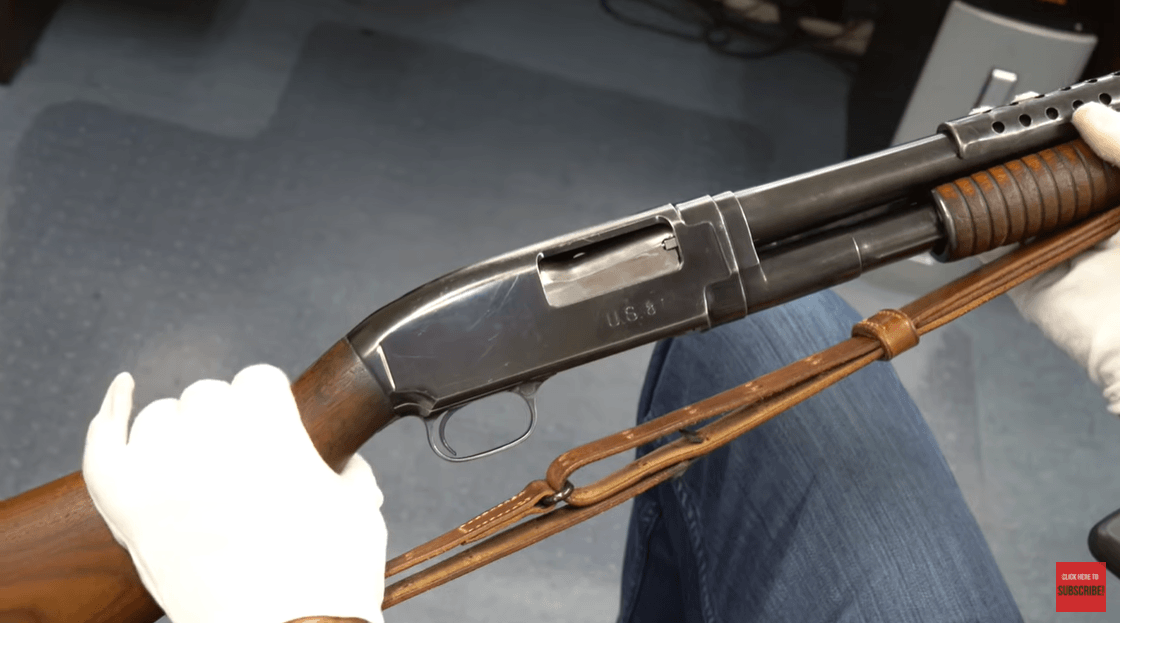
Here, let's take a closer look. Okay, so I don't collect these but we have sold quite a few of them. And whenever we sell them, I think I should get one of these. I said the condition is about average, it's a very remarkable gun kind of hard to find. It's a World War II era, this was actually made in either late '43 or early '44. You can still see that it has a high polish finish and again, it's got some wear.
Specific marks to look for
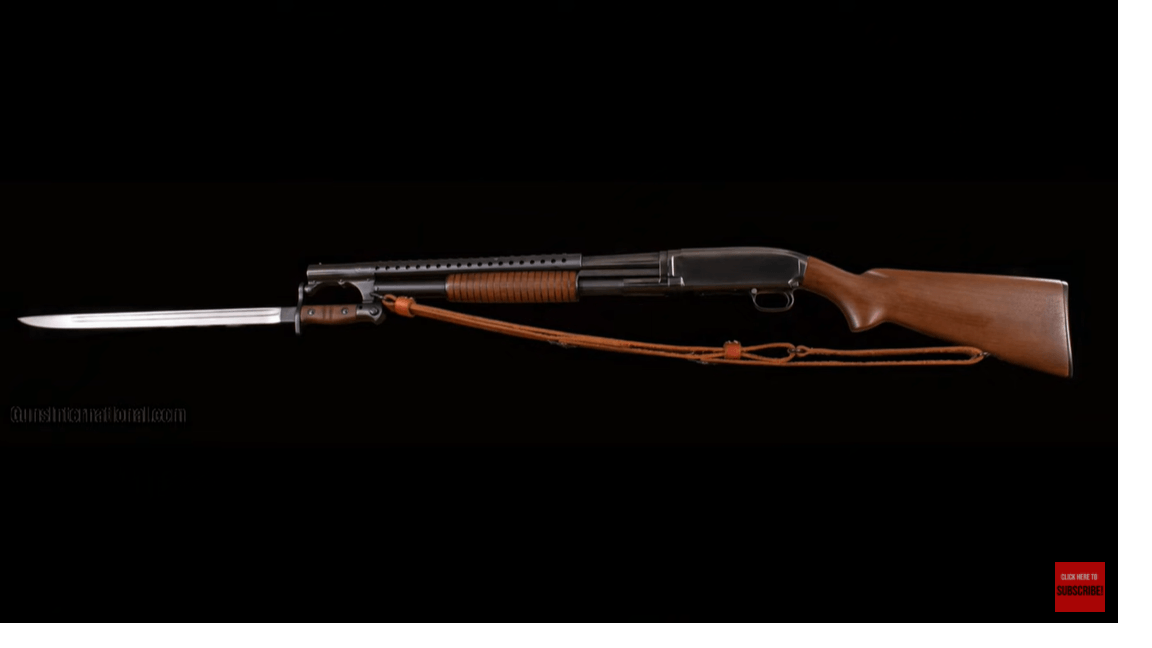
Now the ones that were issued to the military, what you want to look for is the US marking, US property with the flaming bomb. Also at the top, you see the Winchester logo - W in a circle, and a flaming bomb above that. You do see quite a bit of wear here, which detracts a little bit and also the trench guns, they would come with the heat shield. This is the heat shield and a bayo lug. So originally when they went to combat they would come with a bayonet, here's a picture of one with a bayonet, it's kind of a long thing that I assume would make it pretty top-heavy.
Ding, Ding, Ding, Correct Assumption!
This, however, when I first got it I said I'm sure it went to a factory guard in one of the depot's and that turned out to be true, but the story is a lot more interesting than just a factory guard.
We can see where it was held, plus other markings
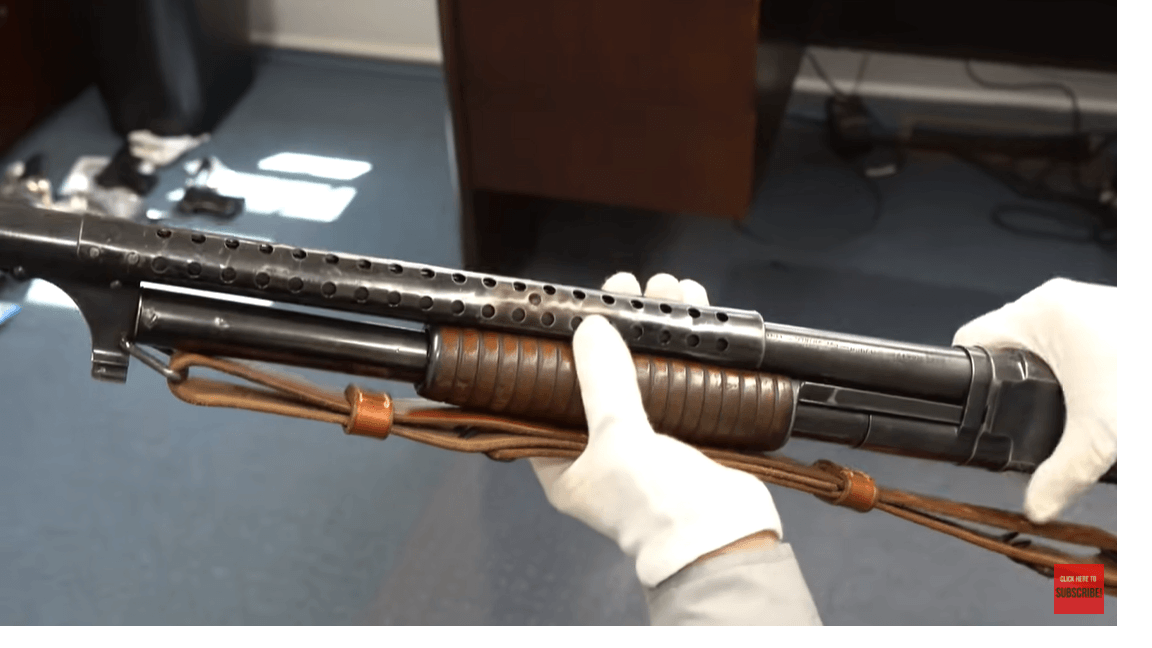
So speaking of guard, the heat shield, you can see here where the person held it like that, maybe with a sweaty hand, hot, humid climate. Sweaty hands here, took some wear there, the tube, it holds five shells and one in the chamber. So you can get a total of six. And also this comes with an original strap, the sling. And the condition of this is really beautiful, very nice sling. A lot of times these will be marked and they'll be marked in here and they'll say maybe Boyt 42. This happens to be from probably 44. And it's not marked in any way, but it's just a very nice sling.
What else to look for?

The other thing you want to look for is the cross canon cartouche. And of course the inspector mark, which is Guy Drewery [02:38]. And this one had a TE on it and I also noticed that there are two places where they scratched a property number. Now, I told the seller, and we listed on gun broker and I said you know this is a nice World War II era Trench model 12, however, this really detracts from it. Because, they electro pencilled it in, in two places and that really detracts, also this really detracts. So I set his expectations a little bit low on the sale of this Trench Shotgun.
Sure enough...
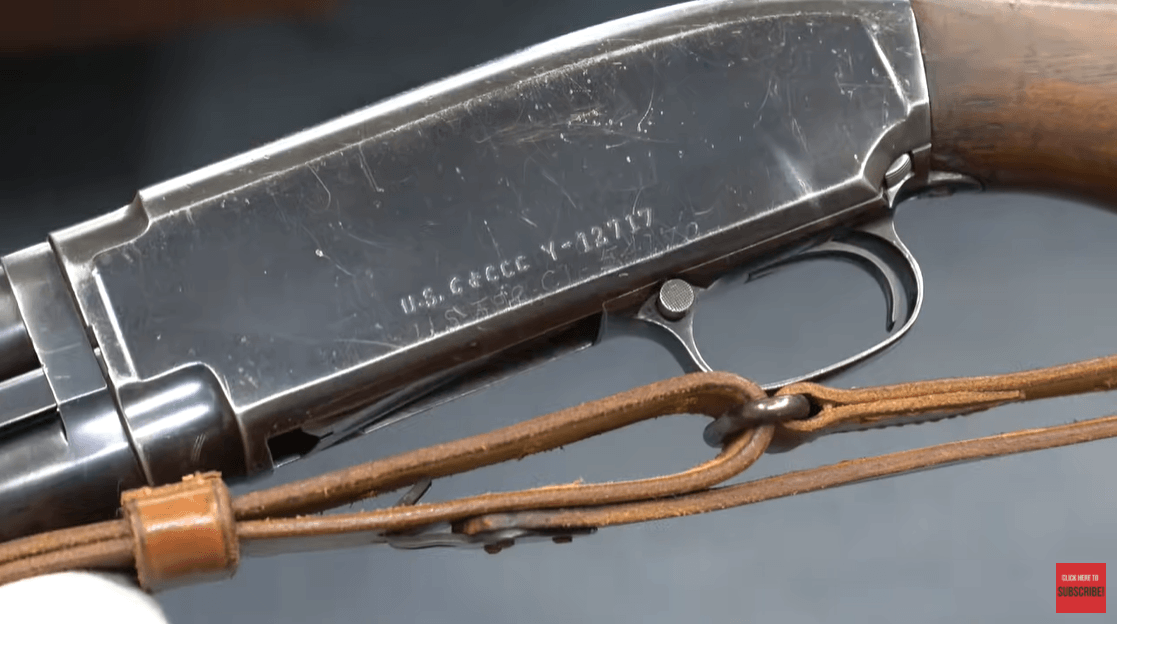
But then we did the listing on gun broker. And in the listing, we describe the markings and we basically said maybe somebody out there can tell us what the meaning is. And so sure enough, actually, just a couple days ago, somebody wrote and said, do you know what this is? Well, here's a clue as to what the connection is.
[Video Clip 03:35 -03:42]
Money from the Department of Defence
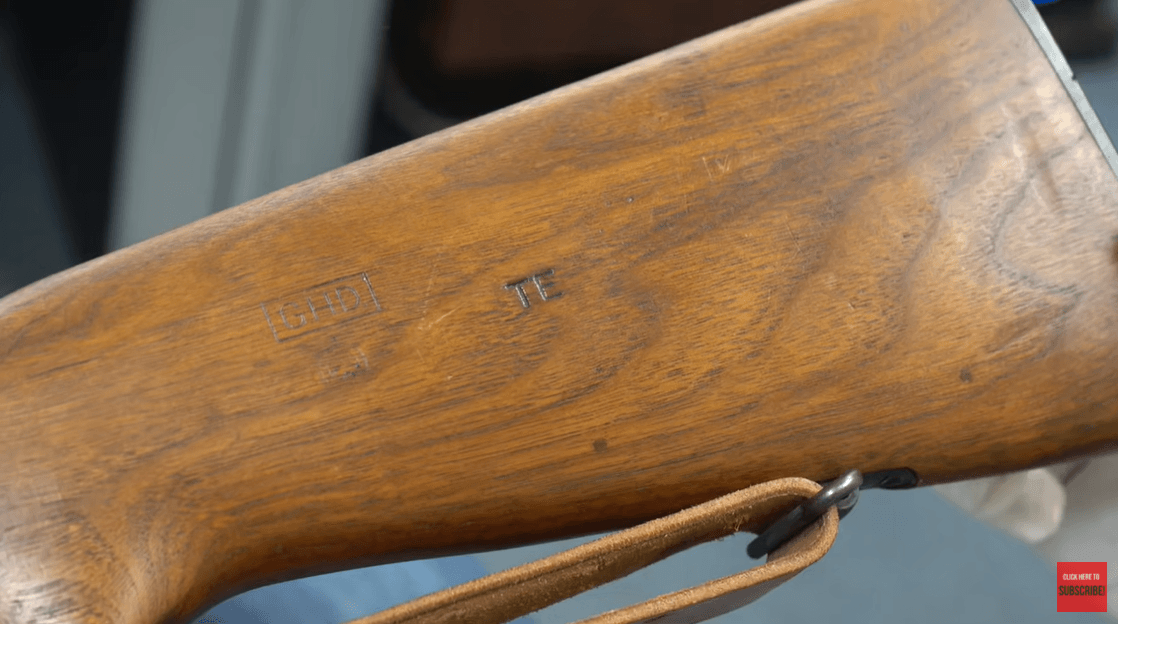
That's right. The money that was procured to buy this shotgun came from the Department of Defence, the money allocated to the nuclear development program. TE stands for Tennessee Eastman, which I didn't know about, I knew about Los Alamos and the Manhattan Project. Well, Tennessee Eastman was involved in the Manhattan Project because they were contracted to come up with a lot of the equipment and the enrichment of the uranium that was used in that project.
Go Subscribe! You don't want to miss out
So the history on this gun is really unique and actually very, very cool. I'm tempted to keep it for myself, but it is on auction and actually there's only one day left. We're releasing this video on Saturday morning and the auction ends on Sunday night, which is a good reason for you to like and subscribe because you'll probably miss it if you don't subscribe to our channel. I'm sure the price will go up. It's fairly low right now the price will go up.
Tennessee Eastman

But the connection is I already mentioned Tennessee Eastman that was a subsidiary of Eastman Kodak. You're familiar with that. But every major company in the country got into defines industry and they've in particular worked with chemicals and equipment that helped with the building of the atomic bomb. At the end of the war, Tennessee Eastman, then they decided they didn't want to be in the nuclear business. And so it was taken over by a division of Union Carbide. And actually, you can see on this marking, CNCC and see, actually, that's Carbide and Carbon Company. And you can see on the marking, specifically, the electro pencil, it's a US property. And there's the union carbine, that subsidiary, and then you see Y-12.
The Secret Facility
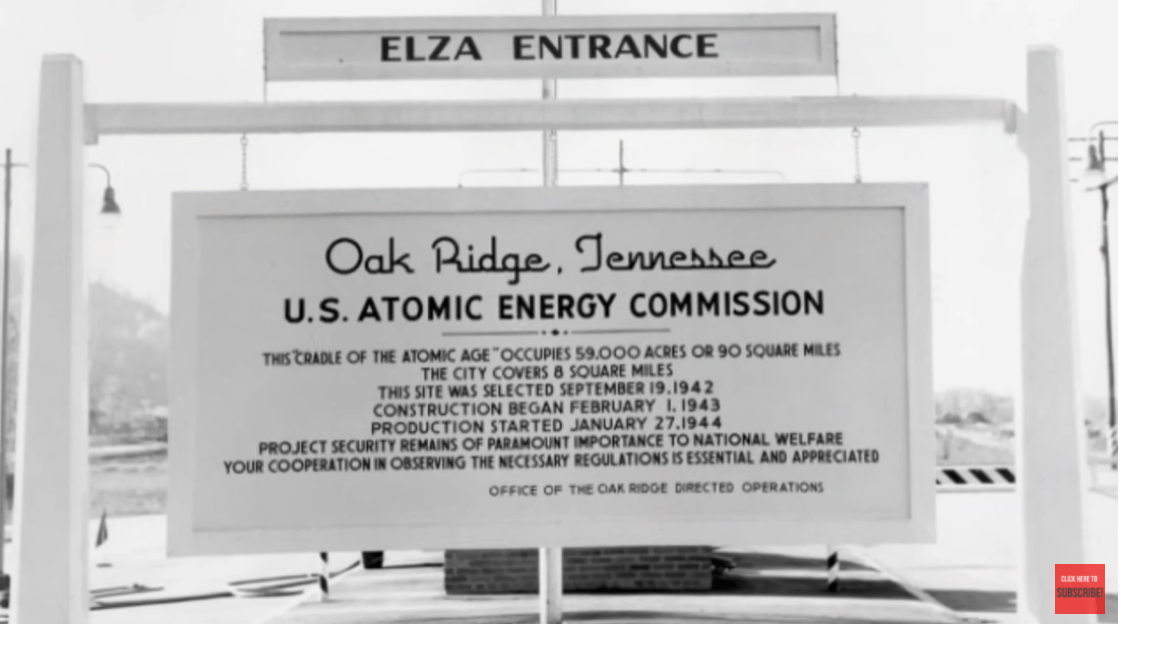
Y-12 was the secret facility, here's a sign actually to the entrance. 90 square miles, this is a huge facility, over 20,000 people hired during the war. So it opened in January of '44 and continued through the end of the war, because they continue to develop the different nuclear bombs. But soon thereafter, I think around 48, they transferred the operations over to Union Carbide. So you can see Y-12 again, that's the secret facility in Tennessee, and 717. So I would only imagine that this is shotgun or gun number 717. So that was the rack inventory number and this was kept at the factory. I know the facility continued to operate through the 40s and 50s, throughout the Cold War. Again, there was a huge nuclear build-up. I don't know if it's still in operation, but I wanted to get this video out quickly. But at some point, they sold off these trench shotguns as war surplus.
Backup a Bit - Here's some Model 12 History
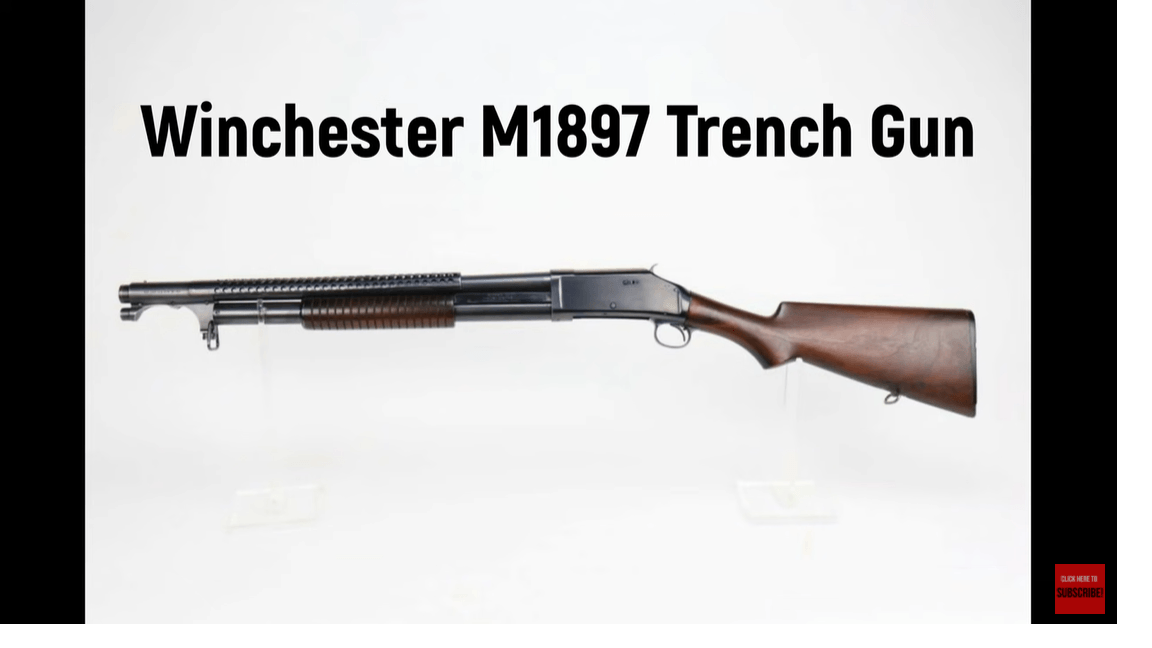
So let's back up a little bit and do a history on the model 12. I was first familiar with in terms of a pump shotgun, the model 1897, Winchester 1897, or model 97. That one is different in that it has an exposed hammer and the action is a little bit different. But that was a predecessor. It was used in the Philippines in 1899 and then it was particularly, and it got its name from trench warfare was used heavily in World War I. This is obvious as to why this would be popular in trench warfare. If you're cleaning out the trenches, not long distance shooting, but you're in a trench at one end and you're winding your way through the trenches. And you come around the corner and there's a covey of German soldiers, you don't want to have to point and aim, you just want to [racking the shell] and let it go. So World War I, this was used. The improvement was the model 12. So again, this is model 1912, patent date. And so they did also use these in World War I, and they used them in World War II, they used them in Korea, they used them in Vietnam. So again, effectiveness was up close in personal warfare. So in the Pacific War, we see a lot of the US Marines they would always have somebody with a shotgun. If you hear something in the bushes, why go and investigate? [Racking the shell], that's all you need. And also in Vietnam, they were popular.
All they need to hear is Say hello to my little friend!
And one other way that these are popular, I get people who ask me from time to time, I need a good home protection piece. A lot of people struggle with an automatic because they can't remember is it loaded is not loading. Do I rack the slide? And what about the safety? So one of the things that we tell people, you might want to consider one of these. Keep it under the bed, you hear something downstairs, and you just go to the top of the stairs and you say -- well, you know what to say, say hello to my little friend! [Racking the shell]. And that's all you have to do, and the person will run out the door. If they're smart, they'll run out to the door. So seriously, a lot of people do use these for home protection, because seriously the sound of racking a shell is iconic and something that everybody recognizes.
Bayonet or no Bayonet
So again, for use World War II, it would come with a bayonet. I doubt that security guards in the depots and plants and actually naval bases, submarine bases, they use these for the guards, the US Marines use them as guards. I doubt that they used them with a bayonet. But I know in combat they did, they were issued with a bayonet.
Still a favourite among collectors
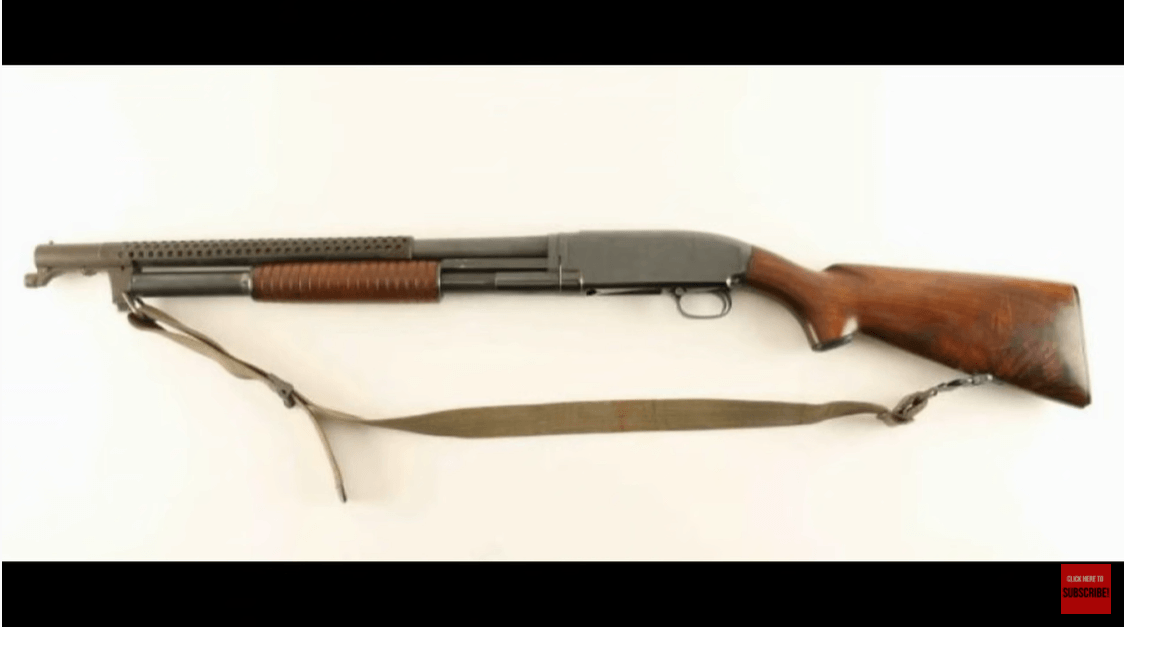
There was about 60,000 of these that were issued during World War II. And they continue to be a favorite among collectors. I would say that over the past five years, the sales on these have really skyrocketed. Actually the model 97 and the model 12. Again, this was early '43 maybe into '44 they opened the factory by the way in January of '44. Because of the TE on the stock, my guess is this was issued for the day the factory opened, so in other words this gun was specifically made to go to the factory and was not issued later, but issued in '44. By late 44 and certainly 45 they did issue these in a parkerized finish. We have sold those, those do so at a little bit of a premium.
You can slam fire these!
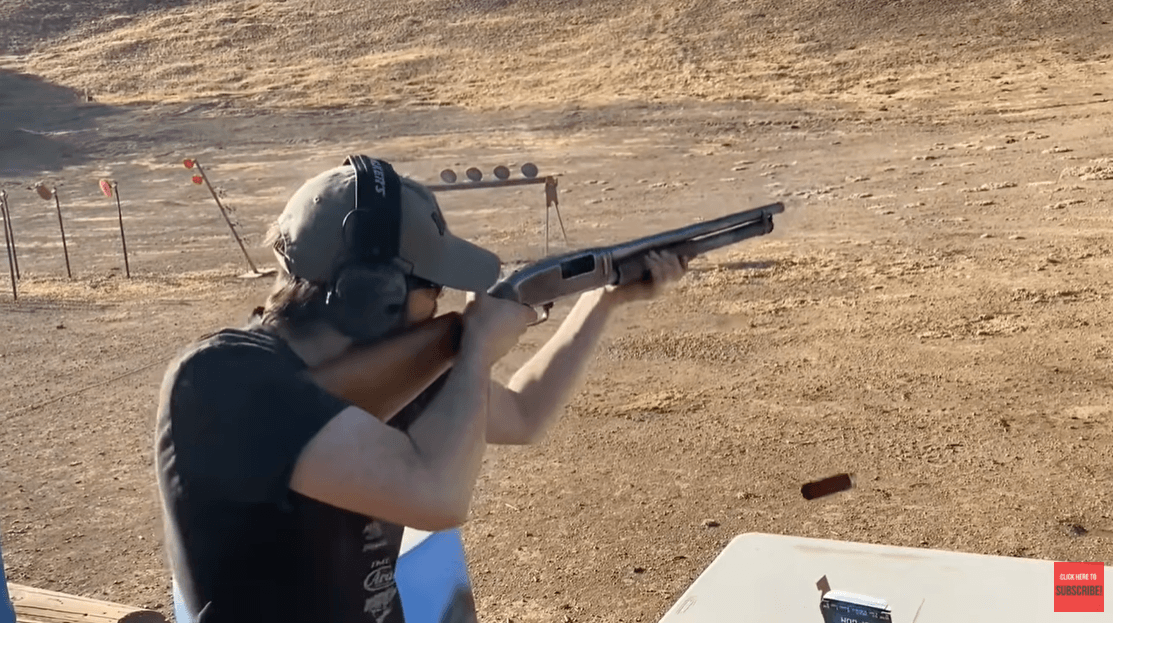
One other feature on this gun, which I've never tried, but I found out about one of our co-workers told me did you know you can slam fire these? So both the model 97 and the model 12, you can slam fire them by basically hold the trigger down and just pump it. And here's an example of somebody slam firing the model 12 [10:24].
Remember to check out the auction
Hey, thanks for watching. Hope you learned something today. And don't forget to check out the auction. There's only one day left. I have no idea how high it will go. But check it out, it should be interesting. And you know on Saturday night when you're watching this and I'll be doing the exact same thing.
Thanks for watching Mitch
Finally, I want to do a shout out to my favorite UPS driver Mitch, thanks for watching.
